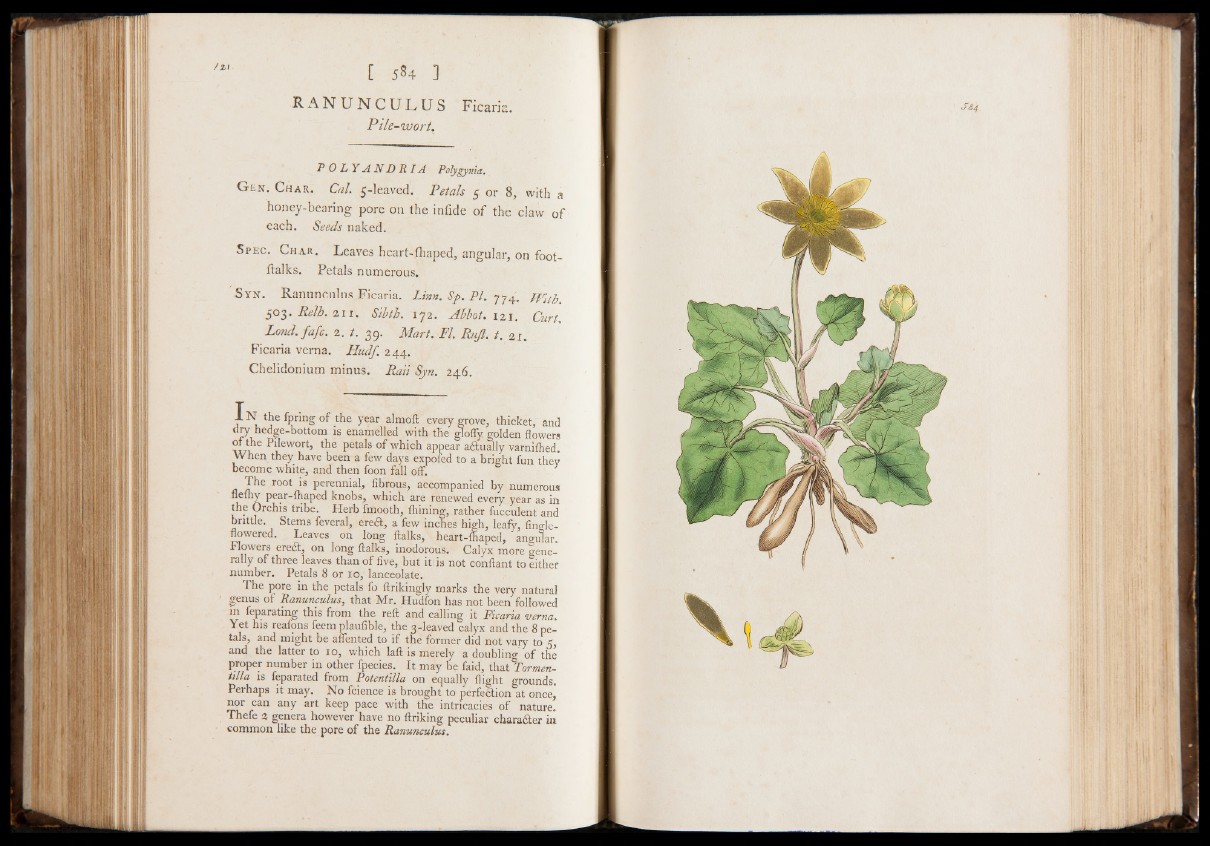
R A N U N C U L U S Ficaria.
Pile-wort.
P 0 L Y j1 N D H I j4. Polygynia.
G en. C har. Gz/. 5-leaved. Petals 5 or 8, with a
honey-bearing pore on the infide o f the claw o f
each. Seeds naked.
Spec. Char. Leaves heart-fhaped, angular, on foot-
ftalks. Petals numerous.
S y n . Ranunculus Ficaria. Linn. Sp. P I. 774. ^ t k
503. Relb. 2 1 1 . Slbth. 172. Abbot. 12 1 . Curt.
Land. fa fc . 2. t. 39. M art. F l. Ruß. t. 2 1 .
Ficaria verna. Hudf. 244.
Chelidonium minus. Rail Syn. 246.
I n the fpring of the year almoft every grove, thicket, and
dp? hedge-bottom is enamelled with the glofiy golden flowers
of the Pilewort, the petals of which appear adually varnlflied.
When they have been a few days expofed to a bright fun they
become white, and then foon fall off. 1
The root is perennial, fibrous, accompanied by numerous
flefhy pear-fhaped knobs, which are renewed every year as in
the Orchis tribe. Herb fmooth, Alining, rather fucculent and
brittle. Stems feveral, ered, a few inches high, leafy, fingle-
flowered. Leaves on long ftalks, heart-fhaped, angular.
Flowers erect, on long ftalks, inodorous. Calyx more generally
of three leaves than of five, but it is not conftant to either
number. Petals 8 or 10, lanceolate.
The pore in the petals fo ftrikingly marks the very natural
genus of Ranunculus, that Mr. Hudfon has not been followed
m feparating this from the reft and calling it Ficaria verna.
Yet his reafons feem plaufible, the 3-leaved calyx and the 8 petals,
and might be affented to if the former did not vary to 5,
and the latter to 10, which laft is merely a doubling of the
proper number in other fpecies. It may be faid, that Tor men-
tula is feparated from Votentilla on equally flight grounds.
Perhaps it may. No fcience is brought to perfedion at once,
nor can any art keep pace with the intricacies of nature.
Thefe 2 genera however have no ftriking peculiar charader in
common like the pore of the Ranunculus.